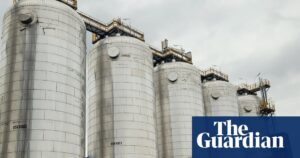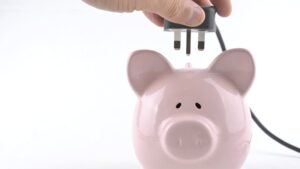
The Reserve Bank of Australia (RBA) governor, Michele Bullock, has dismissed fears of rising unemployment while hinting at a potential hold on interest rates. Speaking at an Australian Business Economists dinner in Sydney, Bullock emphasized that the labor market will not “fall off a cliff,” despite a recent uptick in joblessness and inflation.
Bullock noted that while the RBA was surprised by September’s increase in unemployment and inflation, the overall trend in job creation aligns with expectations. “There are still jobs being created, just not as many,” she stated on Monday night. “We’d always thought [unemployment] would drift up a bit. Maybe it’s drifted up a bit further than we thought, but it’s not a huge amount yet.”
Following Bullock’s remarks, financial markets adjusted their expectations, with the probability of a rate cut next Tuesday plummeting to about 10% from 60%. However, the likelihood of a rate adjustment by the December meeting remains high at 80%.
Economic Signals and Market Reactions
The RBA faces a challenging economic landscape, as recent data presents conflicting signals. Inflation for the September quarter exceeded expectations, while the job market showed signs of cooling. The rise in unemployment to 4.5% surpassed the RBA’s forecasts, prompting calls for interest rate relief as early as next week.
Bullock highlighted the job market’s resilience during her tenure but acknowledged its current slowdown as a consequence of sluggish economic growth. “This is bringing the labor market back more to balance … We think we’re close-ish,” she said. “There’s still signs out there that the labor market’s a little bit tight and that it’s not actually going to, all of a sudden, fall off a cliff.”
Inflation Pressures and Economic Forecasts
As Australians brace for the end of government power bill subsidies, inflationary pressures are set to intensify. The Australian Bureau of Statistics is expected to report a jump in inflation from 2.1% in June to 3% in September. This surge is partly attributed to the phasing out of energy subsidies, with electricity prices potentially rising by more than 9% in the three months to September, according to investment bank Barrenjoey.
Inflation set to accelerate: “Electricity prices could climb by more than 9% in the three months to September, leaving them 24% higher than a year earlier.”
Underlying inflation, measured by the RBA’s preferred “trimmed mean,” is projected to rise by 1% in the quarter, maintaining an annual rate of 2.7%. This stalling of the downward trend since late 2022 poses a significant challenge for the RBA’s policy direction.
Expert Opinions and Future Implications
Johnathan McMenamin, head of economic forecasting at Barrenjoey, described the current economic data as complex for the RBA to navigate. “If the RBA holds off on rate cuts for too long, they risk the economy’s ‘soft landing’ that has seen inflation drop sharply over recent years without a major rise in the jobless rate,” McMenamin warned.
Belinda Allen, CBA’s head of Australian economics, echoed these concerns, noting that after a period of historically high inflation, the RBA remains wary of reigniting inflationary pressures. Allen anticipates the next rate cut could be deferred until February, at the earliest.
The RBA’s upcoming meeting will be pivotal in determining whether to prioritize inflation control or support the slowing jobs market. Luci Ellis, Westpac’s chief economist and a former RBA official, emphasized that forthcoming inflation data will be crucial in shaping the RBA’s decision-making process.
“They are very proud of the gains they have made on the labor market and the unemployment rate and they would still want to preserve that. But I don’t think they will jump at one monthly jobs figure,” McMenamin said.
As the RBA navigates these economic challenges, the potential for a rate hold reflects a cautious approach in balancing inflationary pressures with labor market stability. The coming months will reveal how these dynamics unfold and influence Australia’s economic trajectory.





